My family's cherished Christmas Stollen recipe is made from soft yeasted sweet bread filled with soaked raisins, sliced almonds, and candied citron. And a simple lemon glaze is drizzled on top to add a little extra sweetness.

This website uses affiliate links which may earn commission for purchases made at no additional cost to you.
The German Christmas Bread I Wait All Year to Make
Growing up in Germany, Stollen was as synonymous with Christmas as Lebkuchen. As far back as I can remember, my dad would bake a couple loaves on Christmas Eve, so we could enjoy it on Christmas morning after opening presents. And after eating dozens and dozens of holiday fruit breads like Stollen and German Easter bread, I thought it'd be a cinch to bake my own perfect loaf on the first try. But boy was I wrong! It's taken me several tests and tweaks to nail this recipe, so I have lots of tips to share with you.
But first, let's talk about the filling ingredients. My Dad soaks the raisins in port wine overnight, but apple or orange juice work too if you want more flavor than water. Whatever you do, don't skip hydrating the raisins, otherwise they'll pull moisture out of the dough. And while sliced almonds are usually our go-to, we also bake a loaf without nuts every year for my sister. For the candied citron, lately I've been ordering it online since it's been difficult to find in stores. It comes in a tub and I love how colorful and festive it is!

Ingredients You'll Need: raisins, active dry yeast, milk, granulated sugar, all purpose flour, salt, unsalted butter, eggs, lemon, candied citron, sliced almonds, and powdered sugar.
Welcome to My Kitchen - Let's Bake Stollen!
For the full step-by-step directions and ingredient quantities, scroll down to the recipe card at the bottom of this post.
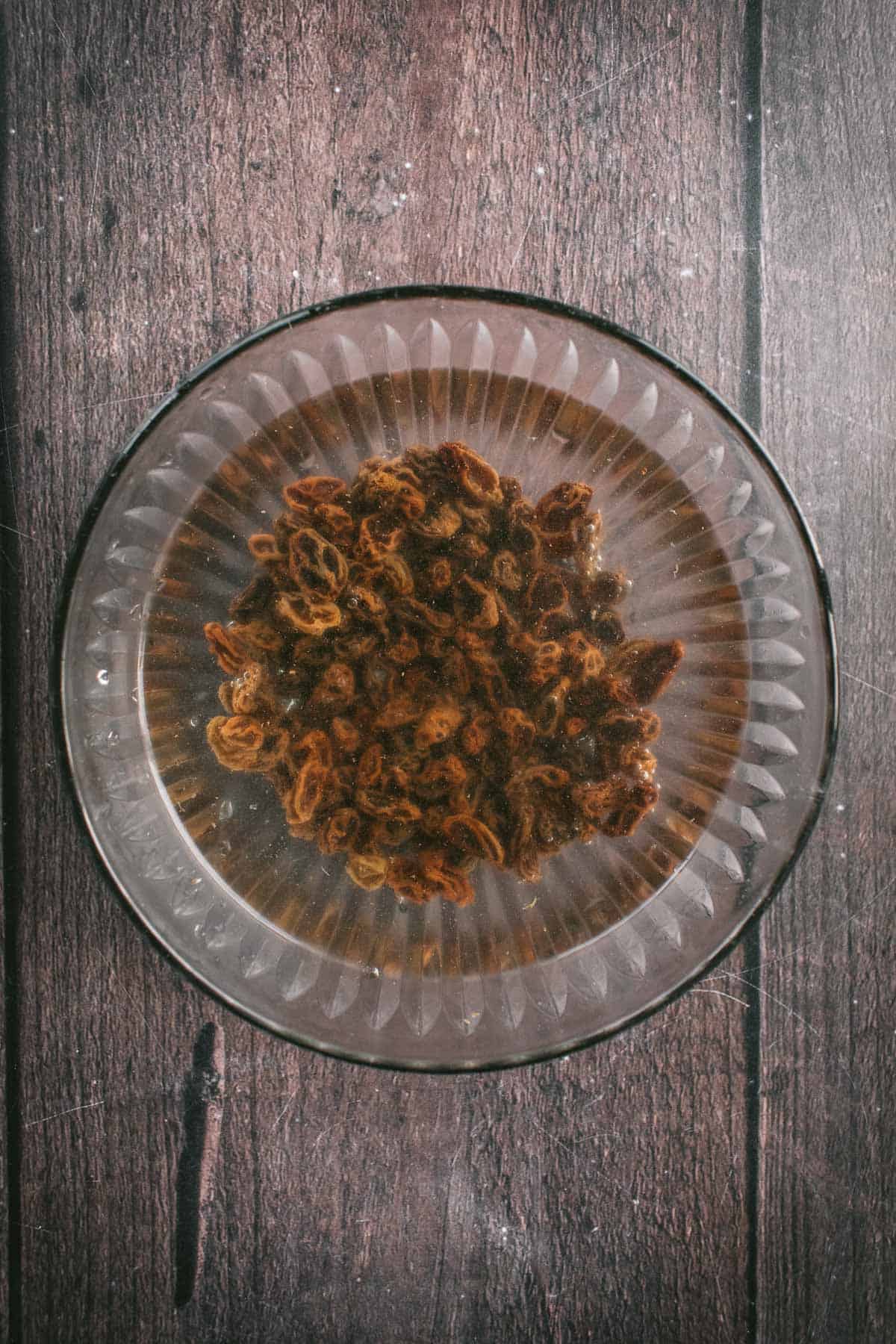
1. Soak the raisins.
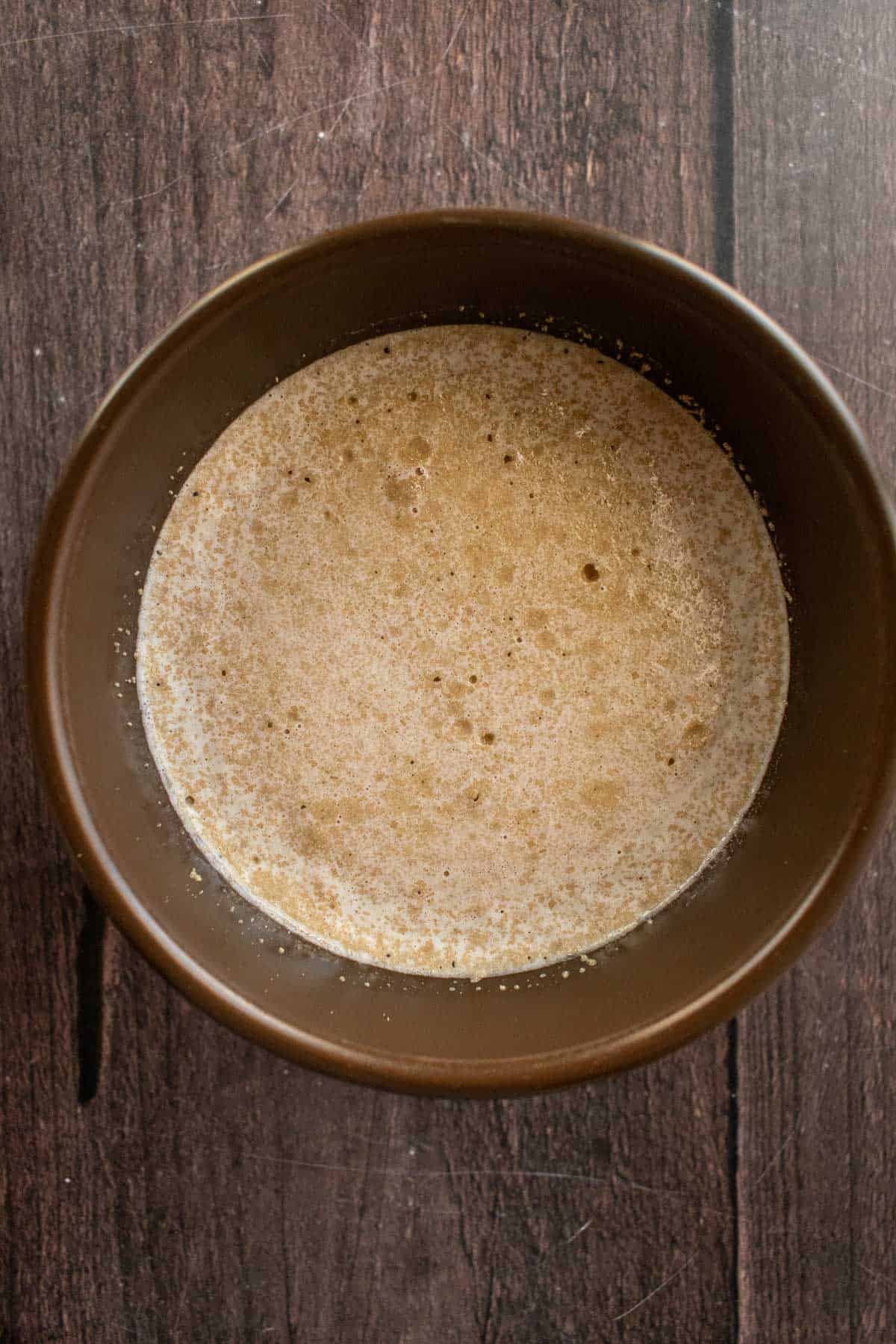
2. Mix yeast, milk, & sugar.
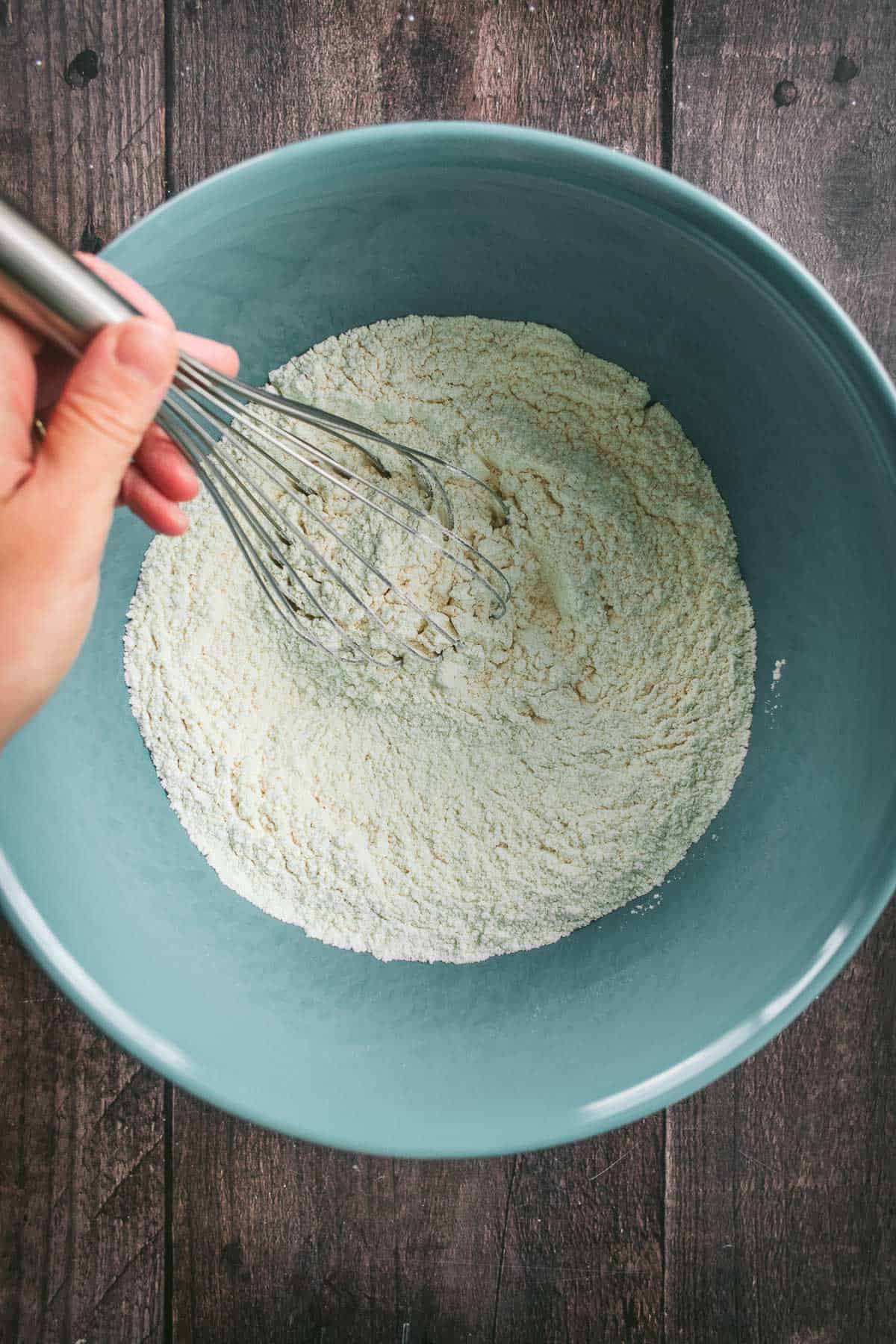
3. Whisk the flour and salt.

5. Knead the dough with the fruit & nuts.
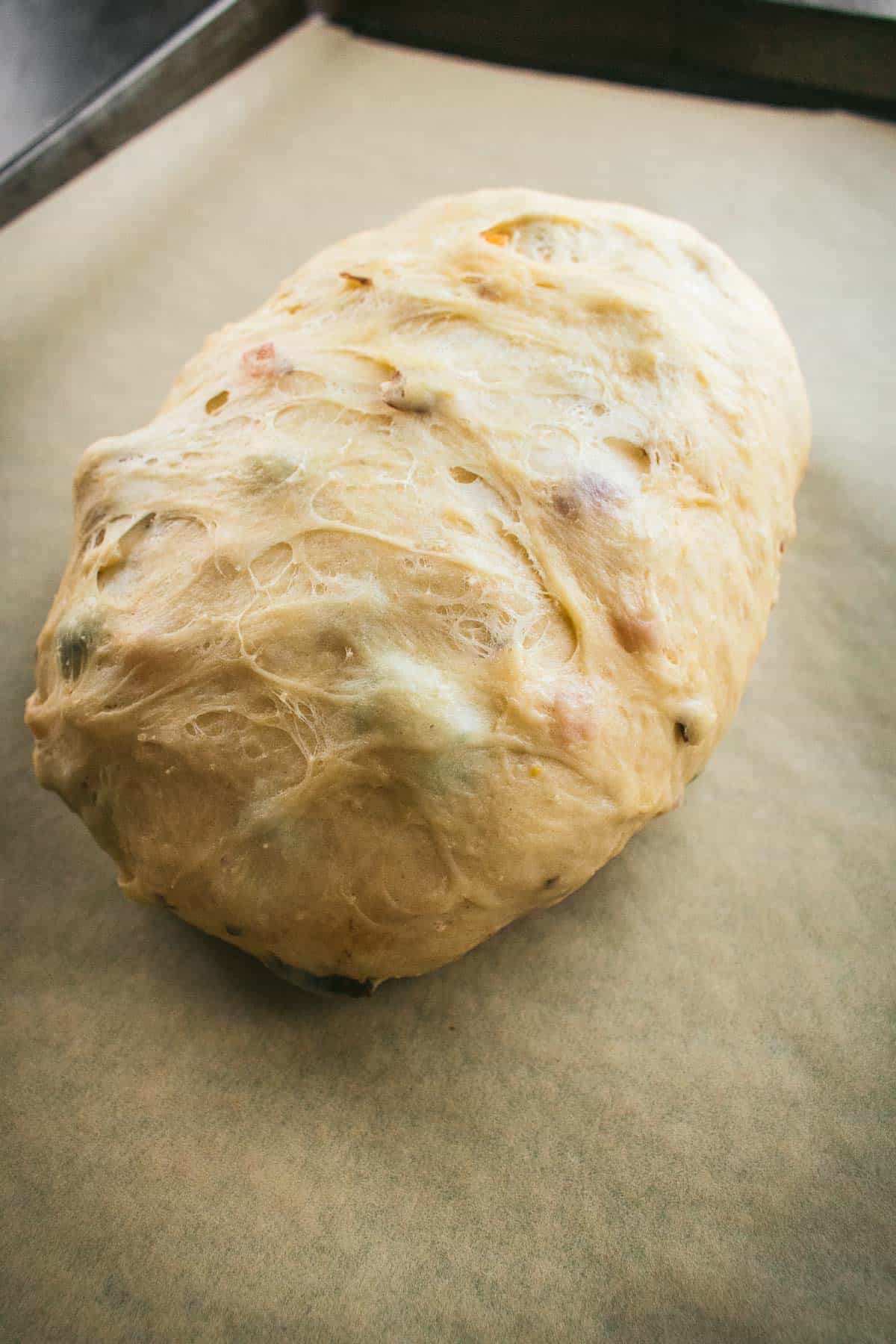
7. Shape and proof the loaf.

4. Mix in the wet ingredients.
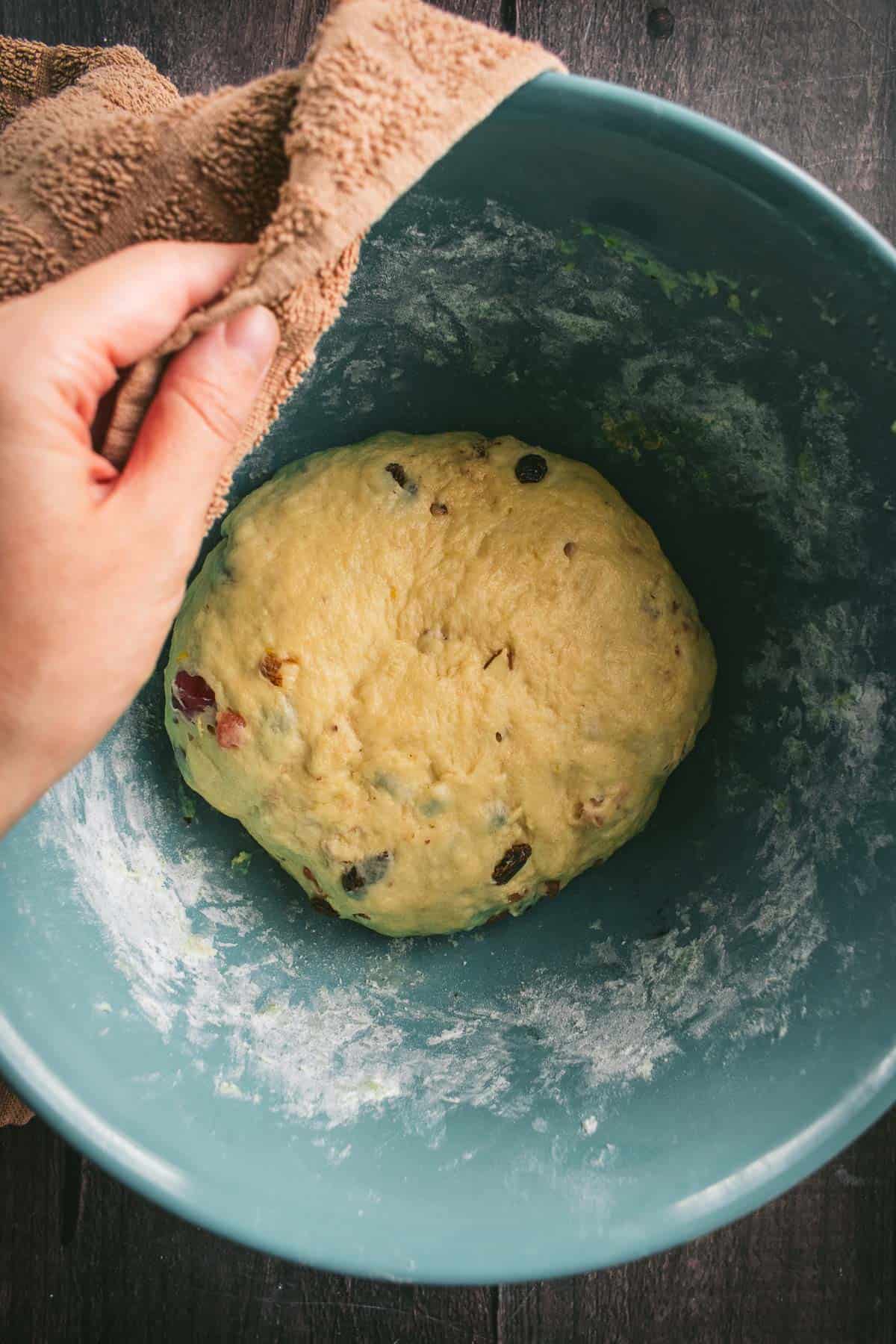
6. Let the dough rise and double in size.

8. Bake & drizzle with glaze.

Carissa's Inside Scoop
Different regions of Germany have different variations of Stollen. This version (chock full of raisins, almonds, and candied citron) is the one I grew up eating every Christmas, unlike Dresdner Stollen which has marzipan in the middle.
What I Learned After Ruining My First Three Loaves
- Bake Temp: I baked my first loaf at 350F, but the outside finished baking while the inside remained doughy. So I reduced the oven temperature to 325F and baked it a little longer for a fully cooked center.
- Yeast: As with many of my other loaf recipes, I tested this with instant yeast. But the amount of fat from the butter & eggs in this rich dough slows down yeast activity, and it didn't rise properly. So I definitely recommend using active dry yeast mixed with milk & sugar first to give the yeast a head start.
- Kneading: I tried kneading the dough for just 5 minutes, but that wasn't enough time to develop elasticity and it ended up dry and crumbly. So after a few more tests, I found that kneading the dough, then adding the fruit & nuts, and then kneading it some more allows the gluten to develop & create soft, chewy bread.
- Shaping: My second loaf came out perfectly risen, but with a big crack on the side. And while I love a good oven spring on my artisan loaves, we want to avoid that here. Make sure you create tension on your loaf before proofing it by gently spreading the top down the sides and underneath.
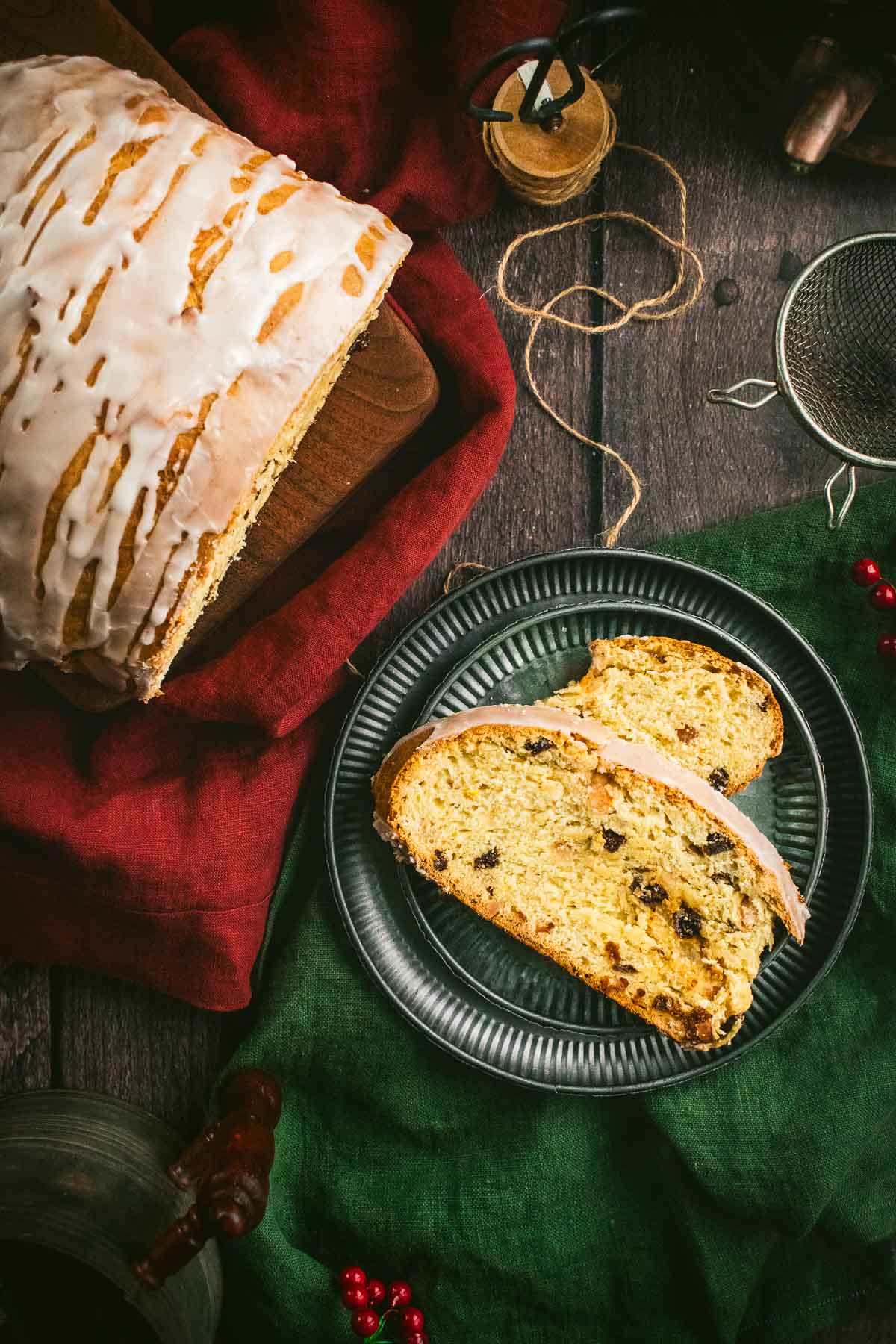

German Christmas Stollen
Equipment
Ingredients
- ½ cup raisins
- 2¼ teaspoons active dry yeast (one packet)
- 1 cup warm milk (between 105°F to 115°F or 41°C to 46°C)
- ½ cup granulated sugar
- 5 cups all purpose flour
- 1 teaspoon salt (use table salt or fine sea salt)
- ½ cup unsalted butter, softened (1 stick)
- 3 large eggs (at room temperature)
- Zest from one large lemon (about 1 Tablespoon)
- ½ cup candied citron
- ½ cup sliced almonds
Lemon Glaze
- 1½ cups powdered sugar
- Juice from one large lemon (about ¼ cup)
Instructions
- In a small bowl, cover the raisins with hot water & let them soak for at least 30 minutes while you prepare the dough.
- In a bowl, mix the warm milk, granulated sugar, and active dry yeast. Set aside for 10 minutes until it becomes frothy on top.
- In a large mixing bowl, whisk the flour and salt. Add the yeast mixture, softened butter, eggs, and lemon zest, and mix with a large spoon until it forms a cohesive dough. (I find it easiest to mix the dough by hand at this stage instead of a spoon.)
- On a lightly floured surface, knead the dough for 5 minutes. Then spread it out in a large rectangle on your counter and spread the drained raisins, candied citron, and sliced almonds on top. Squish the dough back into a ball and knead for another 5 minutes. (If you're using a stand mixer, you can add the nuts and fruit right into the mixing bowl and continue kneading with a dough hook.)
- Place the dough back into the same mixing bowl and cover with a kitchen towel. Let it rest and rise at room temperature for 2 hours, until it doubles in size.
- Line a baking sheet with parchment paper. Set aside.
- Once the dough has doubled in size, shape it on the counter into a large oval. Gently spread the top of the dough down the sides and underneath to create tension on top. Transfer the loaf to the prepared baking sheet. Cover with a kitchen towel and allow the loaf to proof for 1 hour. (The dough is done proofing once a shallow indent made by your finger springs back to its original shape after 2 to 3 seconds.)
- Preheat the oven to 325°F (163°C). Bake for 40 to 45 minutes. The bread is done baking when it's golden brown and has an internal temperature of 190°F (88°C). Transfer to a cooling rack to cool for at least 30 minutes.
- While the bread cools, whisk the powdered sugar and lemon juice. Drizzle the glaze on the slightly cooled loaf, then allow it to finish cooling before slicing. Enjoy!!
Notes
- Storing: Store your cooled loaf at room temperature for a few days. Or I usually bake a double batch and wrap one loaf in plastic wrap then aluminum foil and store it in the freezer for up to a few months.
- Doneness: While the color of the loaf is a good indicator if it's done, I always give mine a poke with a kitchen thermometer to make sure it's between 190 and 200 before pulling it out of the oven.
- Fruit: As you shape the loaf and create tension on the surface, gently press any exposed fruit down and underneath the loaf. I've found that raisins exposed on the surface can burn.
- Soaked Raisins: If you don't have time to soak them for at least 30 minutes, cover the raisins in water and microwave it for 1 minute then let it sit for 5 minutes before draining. Make sure you drain the raisins well and squeeze out any excess moisture from them before adding them into your dough.
- Loaf Size: You can divide the dough in half and bake two smaller loaves for less time.






I'm eggcited to hear from you :)